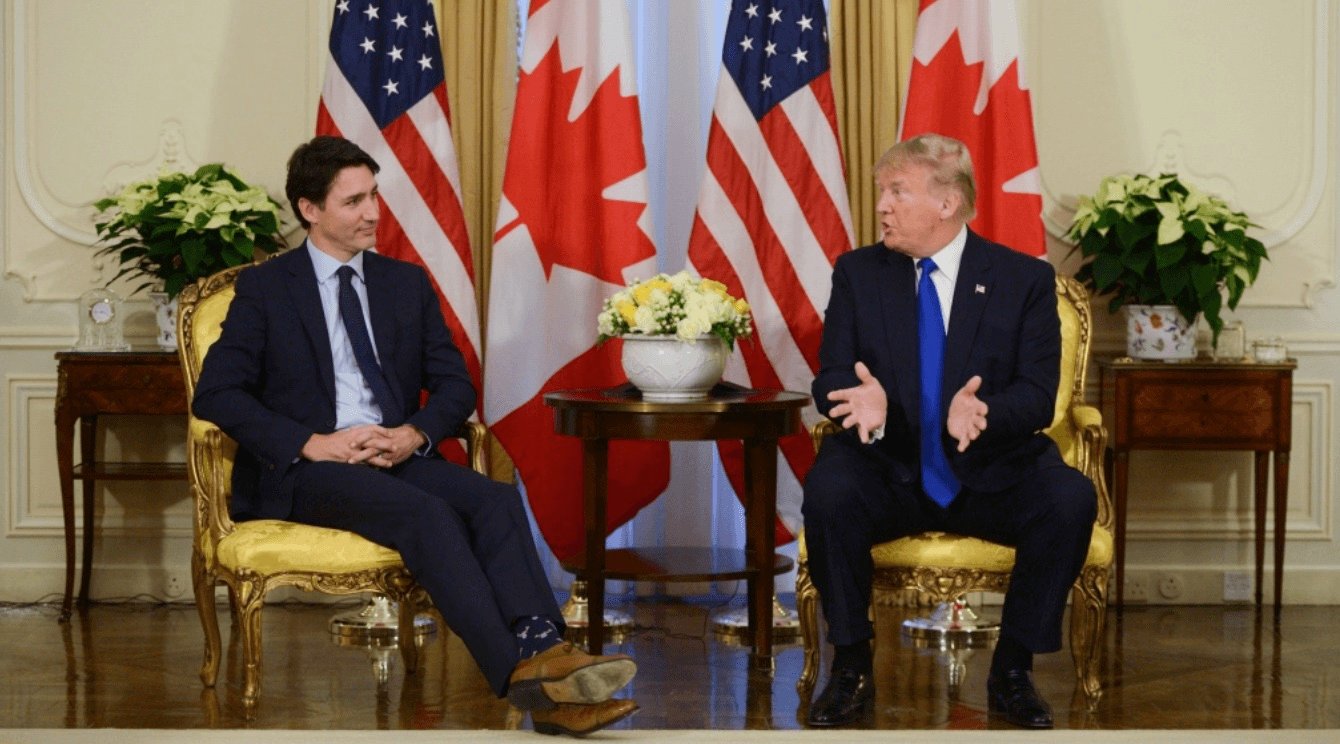A second Trump presidency could affect Canada across multiple domains, as outlined below:
1. Economy
- Tariffs and Trade: Trump’s proposal for a blanket 10% tariff on all imports could trigger a trade war if Canada retaliates, negatively impacting both economies. Key sectors like automotive and agriculture, which rely heavily on cross-border supply chains, are particularly vulnerable. Experts suggest these tariffs could increase costs, especially for imported goods, affecting Canadian consumers and businesses alike.
- Currency Impacts: If tariffs lead to economic volatility, the Canadian dollar could weaken, increasing the cost of imports and creating inflationary pressures in Canada.
2. Trade Relations
- USMCA Re-negotiation: Trump’s willingness to reopen the USMCA in 2026 introduces uncertainty for trade sectors with highly integrated supply chains. Industries, especially automotive and manufacturing, may need to prepare for disruptions as renegotiations could alter tariff structures, affecting production costs.
- Strategic Integration: Despite these potential challenges, Canada’s tightly woven economic ties with the U.S. create opportunities for alignment, especially in the energy and critical mineral sectors.
3. Political Relations
- Diplomatic Tensions: Historically strained by past conflicts, Trump’s previous critiques of Trudeau and his administration suggest renewed friction could arise. However, Canadian officials have expressed readiness to navigate a Trump administration, leveraging their past experience in dealing with his policies.
- Team Canada Strategy: The Canadian government’s proactive approach, led by ambassadors and ministers, aims to protect Canadian interests while reinforcing cooperation with the U.S., focusing on economic stability and mutual prosperity.
4. Immigration and Border Control
- Migration Surge: Trump’s immigration crackdown could prompt a rise in asylum seekers attempting to cross into Canada. Former U.S. Ambassador Kelly Craft warned Canada to prepare for an influx at the northern border as Trump intensifies deportations, potentially affecting Canadian immigration policy and resources.
- Asylum System Pressure: An increase in asylum claims might strain Canada’s immigration system, requiring careful management to balance humanitarian obligations with resource capacity.
5. Defense and NATO Commitments
- Increased Pressure on Defense Spending: Trump’s criticism of NATO members who do not meet the 2% GDP defense spending target could amplify demands for Canada to accelerate its defense budget increase. Canada currently has no plans to meet this target until 2032, which may not satisfy Trump’s expectations.
- NATO’s Collective Defense: If Trump reiterates his stance that the U.S. might not defend NATO allies who fall short on spending, Canada’s security posture could face scrutiny, potentially reshaping defense policies and spending priorities.
Summary
A second Trump term presents both challenges and opportunities for Canada, requiring strategic adaptations to address economic, political, and defense implications. Canada’s longstanding partnership with the U.S., reinforced by cross-border trade and shared security commitments, positions both countries to negotiate solutions to emerging issues. Nonetheless, potential changes in trade policies, immigration dynamics, and defense expectations underscore the importance of proactive diplomacy and policy flexibility.






0 Comments